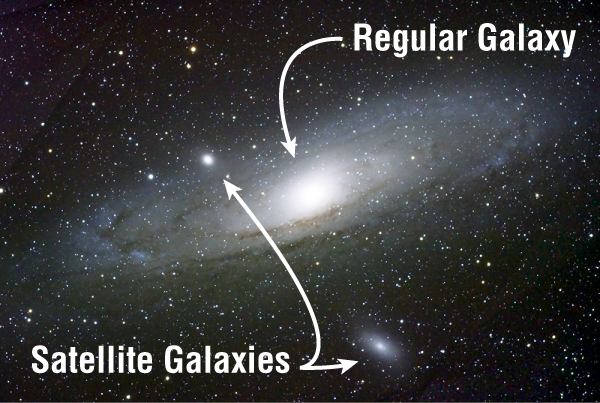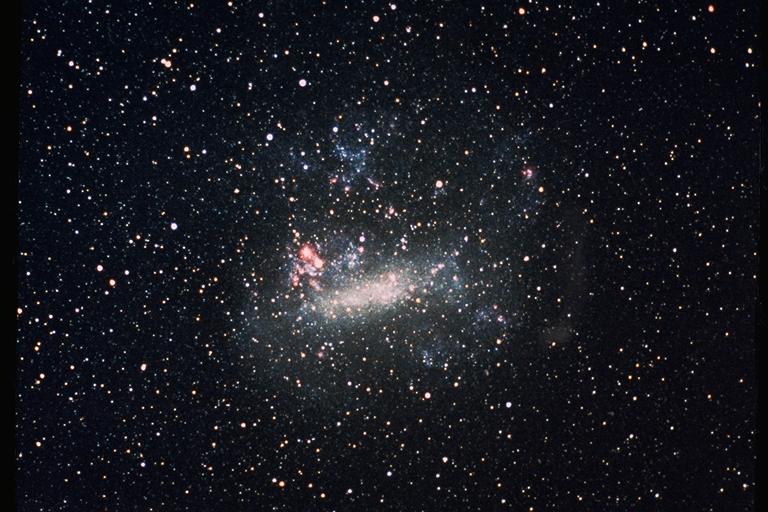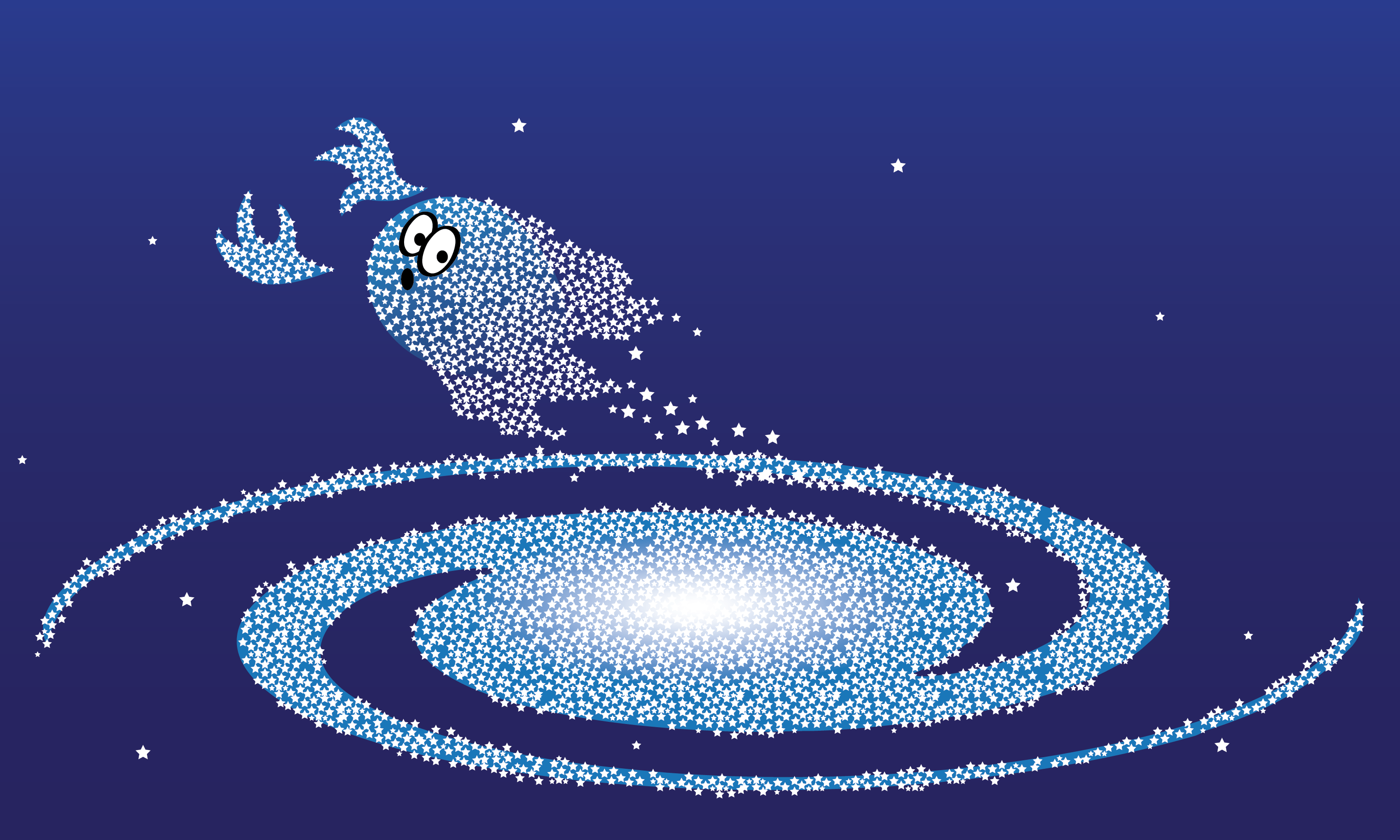Our sun is part of a massive collection of stars in the Milky Way galaxy. These hundreds of billions of stars orbit the galaxy’s center. But did you know that there are things that are even bigger orbiting the Milky Way’s center? Other galaxies orbit it too!

The Andromeda Galaxy with two satellite galaxies surrounding it. Original image credit: Boris Štromar.
These less massive galaxies have their own impressive collection of stars, which all orbit their own center; but the galaxies and everything in them orbit our galaxy too. It’s as if our galaxy is the sun and those other galaxies are planets. Astronomers call them “satellite galaxies.”
Where Are They and What Are They Like?

The Large Magellanic Cloud

The Large Magellanic Cloud
The Milky Way has a number of satellite galaxies, but the biggest one is the Large Magellanic Cloud. It is about 163,000 light-years away and around 1/100th the size of the Milky Way. Unlike our spiral galaxy, this one lacks a clean spiral shape. Some scientists think that is because the Milky Way and other galaxies are pulling and warping it.
In terms of distance, there are two contenders for closest satellite galaxy. One group of stars is small enough that astronomers consider it a “dwarf galaxy.” The other group is so close that they still debate whether or not it is part of our galaxy or its own dwarf galaxy.
Astronomers have named the one that everyone agrees on the Sagittarius Dwarf Spheroidal Galaxy. It’s about 50,000 light-years away from the Milky Way center. It orbits over the top and down below the disk of our galaxy, like a ring over a spinning top.
But there is something even closer to our Milky Way—a cluster of stars named by some to be the Canis Major Dwarf Galaxy. Scientists estimate that it contains around a billion stars. It is so close to the edge of the Milky Way that it is closer to our solar system than to our galaxy’s center. It’s about 25,000 light-years away from us.
Where Does One Galaxy Start and the Other End?
Some scientists don’t think the Canis Major cluster of stars is actually its own galaxy or dwarf galaxy. Instead they think it is just a dense area of faraway stars that are still part of the Milky Way. Either way, it is clear that this bunch of stars has been pulled very close to our Milky Way by our galaxy’s massive gravity. Over time, this could be the fate of other satellite galaxies in the area. They could all one day merge into an even larger Milky Way galaxy!



